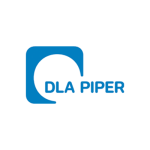On February 2 2022 PepsiCo filed appeals in the Australian Federal Court against DPT assessments raised by the Australian Taxation Office. The appeal concerns the 2018 and 2019 years.
The matter is significant for a number of reasons. It is the first time that a DPT dispute has gone to court in Australia, and likely represents one of, if not ‘the’, first time the DPT provisions have been used in Australia.
But it is also significant for the subject matter, the question of ‘royalty free’ use of intellectual property (IP). The court filings disclose a common toll manufacturing arrangement, where PepsiCo sold concentrate to Schweppes Australia (an arm’s-length unrelated party), who bottled drinks for the Australian market under direction of PepsiCo.
Under this arrangement Schweppes was provided with ‘royalty free’ use of the relevant intellectual property including trademarks for use in the bottling, sale and distribution of the drinks. The relevant agreement was entered into on April 9 2009. Schwepps had been acquired by Asahi on April 3 2009.
Whether a royalty should have been paid, and if so in what amount, is a question that might arise under the usual transfer pricing (TP) provisions in Australian law, or under the general law principles relating to the apportionment of bundled prices. But the Commissioner has chosen to attack the arrangement with our DPT, which gives him significant powers and advantages not available under the other provisions of our Income Tax Assessment Act.
It is important for groups to understand that TP documentation, and indeed TP defence file, does provide reassurance in relation to Australian DPT risk. Although parts of the TP documentation might be relevant to the process of assessing DPT risk, it is a separate process driven by unique Australian legislation, case law relating to our anti-avoidance rules, and the evidence.
This case is relevant not just for ‘royalty free’ IP use (both in the technology sector and the consumer goods sectors), but also for any reorganisation of Australian intellectual property assets of international groups. In particular it highlights a particular risk that must be addressed by groups considering their risk under TR 2021/D4 (licencing and distributing software and cloud services) and TA2020/1 (dealings with intangible assets).
It is important for groups to understand whether their arrangements have a DPT risk, and to understand what proactive steps they must take to successfully manage the risk. The need for proactive steps is driven by the advantages the DPT provisions give the Commissioner in any dispute.
Key elements of the DPT
The Australian DPT can apply to multinational groups with more than A$1 billion global group- wide revenue (SGEs) by imposing a penalty tax rate of 40% to Australian tax benefits obtained in income years commencing on or after July 1 2017, even if the scheme commenced in prior periods.
The 40% DPT penalty tax rate will apply to the amount of an Australian tax benefit if it would be concluded that there was a principal purpose of obtaining an Australian tax benefit, or both to obtain an Australian tax benefit and reduce foreign tax liabilities.
The rules require:
Payment of the tax upfront whether there is an ongoing dispute or not; Deferral of any appeal processes for 12 months (the ‘review period); and
Restrictions on evidence that can be used in any court case.
Certain ‘carveouts’ are available.
What steps should groups take?
The most important aspect of managing DPT risk is that groups must prepare their ‘case theory’ against any DPT risk in advance, and have the key evidence available on file. This is because the legislation contains provisions preventing the admissibility of evidence in later court proceedings if that evidence was in the custody and control of the taxpayer (or an associate of the taxpayer) and was not provided by the taxpayer to the Commissioner before or during the 12-month review period following a DPT assessment.
The starting point for assessing DPT risk and deciding what a defence file should contain is a review to determine whether the Commissioner is able to suggest an alternative business model to your current Australian business model, which if you had used it, would lead you to pay more Australian tax. This alternative business model is the ‘alternate postulate’ and the additional Australian profits it would have generated are the ‘diverted profits’. There may be more than one alternate postulate.
For example, the PepsiCo filings suggest that the Commissioner has argued that, but for its principle purpose of obtaining an Australian tax benefit, PepsiCo would have charged a royalty for use of intellectual property by Schwepps.
It is then necessary to consider whether any of the alternate postulates are ‘reasonable’. This requires an understanding of the commercial factors which actually make them impossible or unlikely (the legislation has more details of this requirement). This may require expert assistance from inside the group or from external experts.
It may be possible to work backwards from the offering to the end user, to show that the commissioner’s alternative postulate is an unnecessarily complex approach to satisfying the customer’s needs, making it an unreasonable alternative postulate; and
It might also be possible to show that although there was a diverted profit amount, it arises because of substantial commercial purposes of the structure, rather than tax ones (a number of factors must be taken into account, including whether ‘quantifiable non-tax financial benefits’ exceed tax benefits).
It is possible that evidence as to usual commercial practice in the market, prior group practice and approaches adopted in other comparable agreements might be relevant in the PepsiCo matter, for example. As might evidence about the actual valuation of the rights to use the relevant intellectual property in the particular fact pattern.
The legislation also contains carveouts which might be relevant to risk assessment:
Groups where Australian income does not exceed A$25 million;
Groups where the diverted profits are actually taxed elsewhere in the world at a rate which is equal to or greater than 80% of the Australian tax rate of 30%; and
Groups who can establish that every group entity involved has ‘sufficient economic substance’.
Clearly evidence as to the second and third carveouts may be complex to assemble, and it clearly best done well in advance. Even if only to confirm that these carveouts are not available.
Australia’s DPT has been dismissed by many groups as simply a threat used to ensure proper TP analysis. It is, however, a much more complex and important risk that must be independently assessed.
Paul McNab
Partner, DLA Piper












